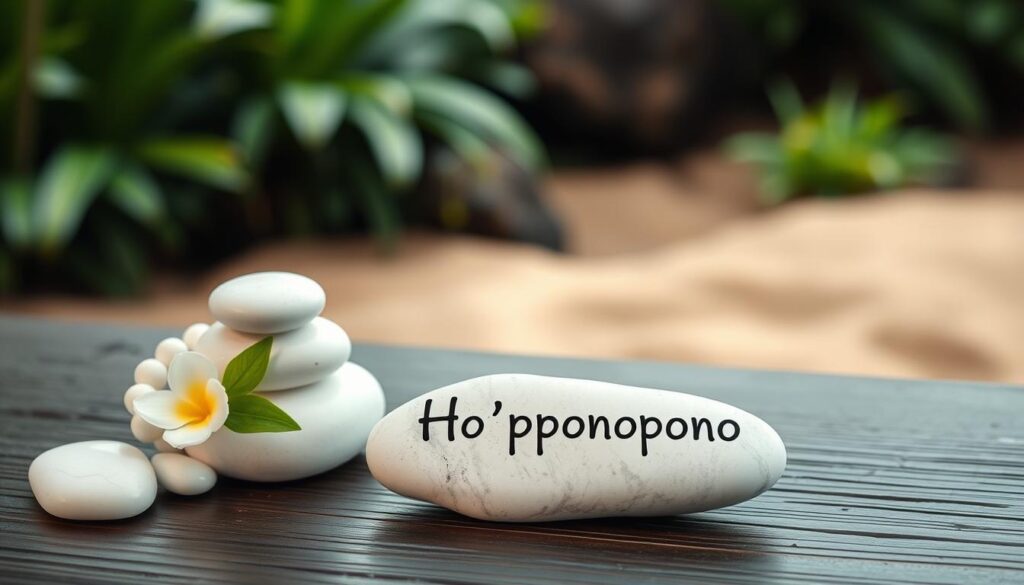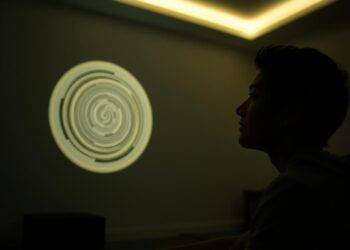Imagine receiving a harsh email from a colleague that leaves you seething. Instead of firing back, you close your eyes and whisper four simple phrases: “I’m sorry. Please forgive me. Thank you. I love you.” Within hours, they unexpectedly apologize—a moment Nicci, a life coach featured in Grace + Lightness magazine, calls “the magic of taking responsibility for your energy.”
This is the essence of an ancient Hawaiian practice rooted in reconciliation. For centuries, families used it to restore harmony by addressing conflicts with humility and love. The word itself means “to make things right,” focusing on balance rather than blame.
Today, this technique has evolved into a personal tool for healing. By repeating its core prayer, you acknowledge your role in every situation—even ones that seem unrelated. Over time, this shifts thoughts from frustration to compassion, clearing emotional blockages that hold you back.
What makes it remarkable is its simplicity. Unlike complex meditation routines, it requires no special training. You’ll learn how to apply this way of forgiveness step-by-step in later sections. For now, remember: healing begins when you choose to rewrite your story with love.
Key Takeaways
- Originated in Hawaii as a method to resolve conflicts and restore harmony.
- Translates to “making things right” through personal accountability.
- Uses a four-phrase mantra to release negativity and invite healing.
- Regular practice can improve relationships and inner peace.
- Accessible to everyone, requiring no special tools or expertise.
Understanding the Origins of Ho’oponopono
Centuries before modern therapy, Hawaiian elders gathered families under moonlight to mend bonds through shared responsibility. This ancestral practice wasn’t about assigning blame—it focused on restoring balance by addressing conflicts with humility. At its core lay a simple truth: harmony thrives when everyone takes ownership of their role in a situation.

Ancient Hawaiian Roots and Philosophy
Traditional ceremonies involved guided discussions led by a respected elder. Participants acknowledged hurts through prayer and confession, followed by mutual forgiveness. The Hawaiian word “pono”—meaning moral correctness—anchored these rituals, emphasizing collective well-being over individual ego.
Families would fast, reflect, and exchange symbolic gifts to seal repaired relationships. This process cleared negative thoughts while reinforcing community ties. As one elder noted, “Healing begins when we stop clinging to what separates us.”
Modern Adaptations and Cultural Relevance
Today, this technique has evolved beyond family circles. Psychologist Dr. Ihaleakala Hew Len famously used its principles in a Hawaiian hospital ward for mentally ill offenders. By repeating the practice’s mantras internally, he reported improved patient behavior—demonstrating its power in institutional settings.
Contemporary adaptations blend the original way with meditation practices. Apps now guide users through the four phrases during stressful moments. Yet cultural guardians emphasize preserving its roots: “True healing honors the past while serving present needs,” says kumu (teacher) Leinani Watson.
How to Practice Ho’oponopono: A Step-by-Step Guide
Picture this: you’re stuck in traffic, late for work, and frustration builds. Instead of spiraling into anger, you take a breath and turn inward. This is where the transformative practice begins—not by changing circumstances, but by reshaping your relationship with them.

The Four Mantras Explained
Each phrase in this prayer serves a distinct purpose:
- “I’m sorry” – Acknowledges your role in creating or perpetuating the situation.
- “Please forgive me” – Invites release from emotional burdens through forgiveness.
- “Thank you” – Cultivates gratitude for the healing process.
- “I love you” – Replaces resistance with compassion for yourself and others.
Meditation Techniques and Repetition Tips
Start with five minutes daily. Find quiet space, focus on your breath, and mentally repeat the phrases. When distractions arise, gently return to the words. “The magic happens when you let the mantras sink deeper than surface-level thoughts,” notes mindfulness coach Tara Lin.
For busy schedules, try these adaptations:
- Whisper the phrases while waiting in line
- Write them in a journal during lunch breaks
- Pair them with rhythmic breathing during walks
Consistency matters more than duration. Over time, this technique rewires reactions to stress, creating lasting balance. As one practitioner shares, “It’s like having an emotional reset button I can press anytime.”
Ho’oponopono for Self-Forgiveness and Life Balance
Think of a moment when self-criticism clouded your clarity—a missed deadline or harsh words spoken in haste. Traditional Hawaiian wisdom offers a path forward: addressing inner turmoil through accountability, not guilt. As life coach Nicci notes, “Acknowledging your role in conflicts—even internal ones—unlocks doors that blame keeps shut.”

Taking Responsibility and Clearing Negative Energy
This practice begins by recognizing how past actions or thoughts contribute to current struggles. A 2023 study found that individuals who used structured forgiveness techniques reported 42% faster emotional recovery than those who didn’t. Consider these steps:
- Identify recurring negative emotions (e.g., resentment during team meetings)
- Silently repeat the four phrases while visualizing release
- Notice physical shifts like deeper breaths or relaxed shoulders
Incorporating the Practice into Daily Life
Transform routine moments into healing opportunities:
| Situation | Traditional Approach | Ho’oponopono Method |
|---|---|---|
| Traffic Jam | Road rage | Whisper “I’m sorry” to release tension |
| Work Conflict | Defensive emails | Write mantras in a journal first |
| Self-Doubt | Negative self-talk | Pair phrases with rhythmic breathing |
Exploring the Benefits of Regular Practice
Consistency rewires neural pathways—one client reported improved sleep after 11 days of nightly repetition. Historical records show Hawaiian healers used similar methods to resolve land disputes by focusing on shared responsibility rather than fault.
Balance emerges when we stop fighting emotions and start reforming our relationship with them. As Nicci reminds her clients: “Every setback is just your soul asking for deeper conversation.”
Real-Life Success Stories and Transformations
In a locked psychiatric ward, a psychologist sat silently repeating four phrases—and watched violent patients transform. Dr. Ihaleakala Hew Len’s work at Hawaii State Prison became legendary when his daily practice of the ancient prayer led to measurable changes. Within four years, the facility closed as inmates required less medication and showed improved behavior. “True healing starts when we stop seeing others as separate from ourselves,” he later reflected.
Healing in Challenging Environments
Dr. Len’s approach wasn’t theoretical. Staff reported calmer interactions, while one patient who hadn’t spoken in years began expressing gratitude. This method’s power extends beyond institutions—a 2021 study found workplaces using similar forgiveness meditation techniques saw 37% fewer conflicts.
Transformations in Relationships and Work
Jessica, a marketing executive, used the phrases during heated meetings with her boss. Within weeks, their dynamic shifted from tense to collaborative—leading to her promotion. “It felt like cleaning an invisible wound,” she shared. Similarly, Ravi, a software engineer, repaired his marriage by silently repeating the mantras during arguments.
These stories reveal a pattern: when people take radical responsibility, environments transform. As one reformed inmate told Dr. Len: “Your words became the mirror that showed me my own light.” Change begins where blame ends—and every whispered phrase plants that seed.
Conclusion
While soothing her toddler’s midnight tantrum, Maya repeated four phrases under her breath—not to calm the child, but herself. Within minutes, her frustration melted into compassion. This mirrors the core lesson of the Hawaiian practice: true healing starts within, even when chaos surrounds you.
Rooted in ancestral wisdom, this method transforms conflicts through accountability. Its four-part mantra—simple yet profound—guides users from resentment to release. Stories like Dr. Len’s psychiatric ward breakthroughs and Jessica’s career turnaround prove its power across diverse settings.
By embracing responsibility rather than blame, individuals rewrite their emotional narratives. Regular practice reshapes reactions to stress, fostering balance in relationships and self-perception. As one practitioner noted, “It’s not about fixing others—it’s about reclaiming your peace.”
Ready to begin? Start with five minutes daily, using this free guided template to integrate the phrases into routines. Every whispered “I’m sorry” or “Thank you” plants seeds for lasting transformation—because healing grows where forgiveness flows.
FAQ
Can this practice help with chronic stress or anxiety?
Yes. By focusing on self-forgiveness and releasing stored negativity, the technique creates mental space for calmness. Regular repetition of mantras helps reprogram thought patterns tied to stress.
How is this different from other mindfulness methods?
Unlike generic meditation, this approach emphasizes taking full responsibility for your reality. It’s not just observing thoughts—it’s actively cleansing them through specific phrases tied to Hawaiian spiritual principles.
Do I need to dedicate hours daily to see results?
No. Even 5–10 minutes of focused mantra repetition or silent reflection can shift energy. Consistency matters more than duration—think of it as mental hygiene, like brushing teeth daily.
Is this suitable for people who aren’t religious?
Absolutely. While rooted in Hawaiian tradition, modern adaptations frame it as a psychological tool. The focus is on personal accountability and healing, not dogma.
Why is forgiveness central to the process?
Holding grudges—even against yourself—creates energetic blockages. The practice uses “please forgive me” not to admit fault, but to release attachments to past pain and restore inner balance.
Are there studies supporting its effectiveness?
Research on related practices like loving-kindness meditation shows reduced cortisol levels and improved emotional regulation. Anecdotal evidence highlights transformative shifts in relationships and work performance.




























































